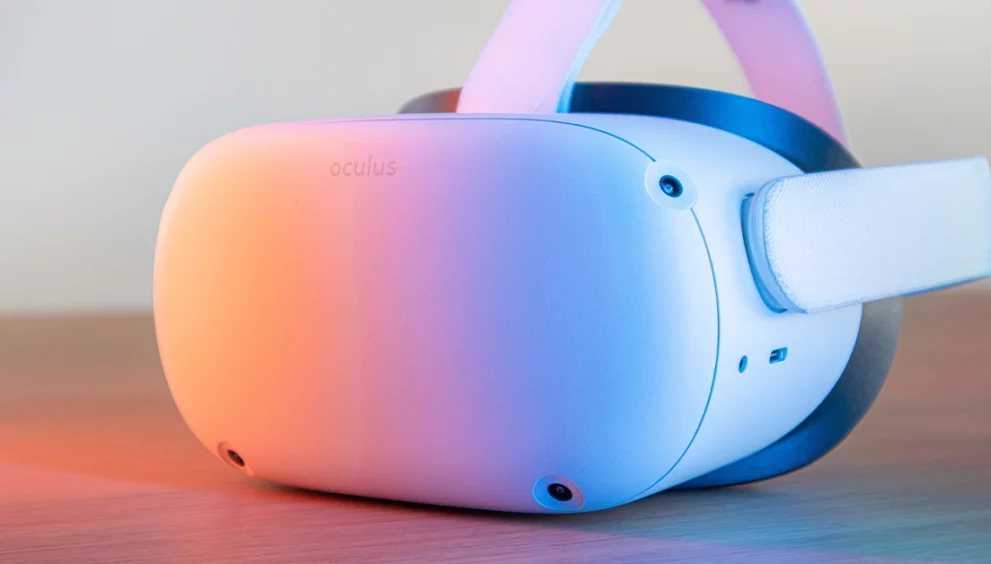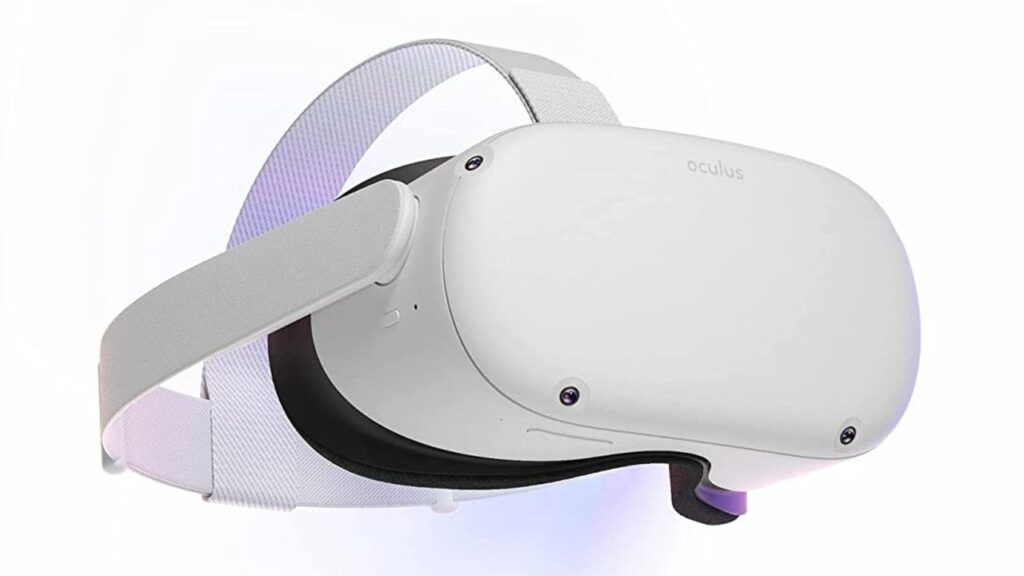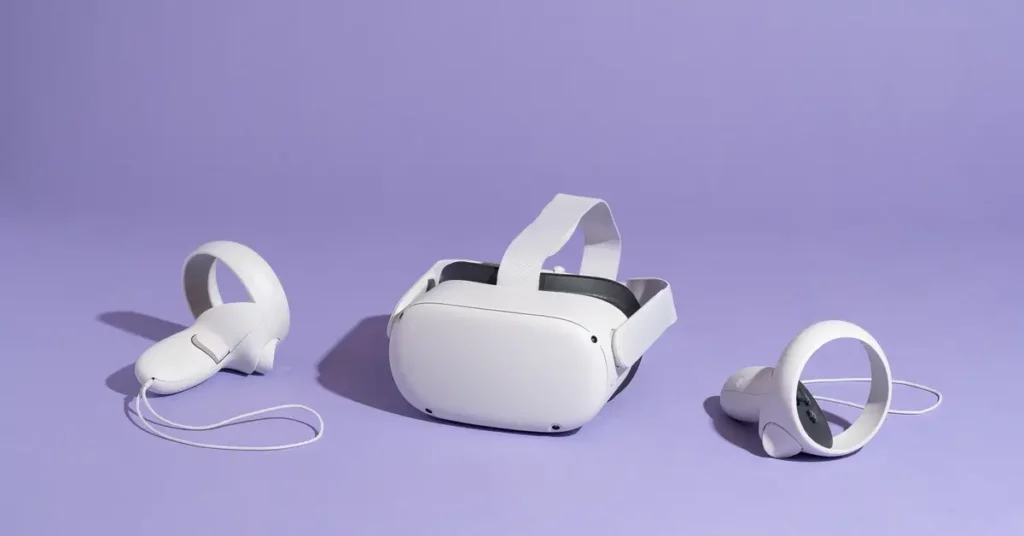Revolutionize Your Life with VR Headset

VR headsets are quickly becoming the go-to devices for experiencing immersive virtual reality in a 3D environment. A VR headset is a device that contains two lenses that display images in 3D, a head strap for comfort and adjustment, and audio for sound. By using sensors to track movement, users have greater control over their virtual environment.
VR headsets are used for gaming, entertainment, education, and corporate applications. They provide an incredibly realistic experience with stunning visuals that can transport you to different places or let you interact with others in a variety of ways. With such an array of possibilities at your fingertips, it’s no wonder why these headsets are revolutionizing how people interact with the world around them.
Benefits of Using VR Headsets
The world of virtual reality has much to offer those looking for a unique and immersive experience. VR headsets provide the ability to explore far-off locations, engage in educational activities, and interact with friends while playing games all without ever leaving the comfort of your home. Through this technology, users can be transported back in time or to other planets, providing exciting opportunities often inaccessible in real life.

Moreover, there are now more affordable options on the market that come equipped with built-in speakers for an audio-rich soundscape and integrated microphones for communicating with others during gameplay sessions. The more advanced models also feature motion tracking technology which allows for smoother movement control when engaging with objects in the game environment, such as swinging swords or throwing balls. This makes virtual reality a great way for anyone looking for something different in their lives.
Educational tools are also being developed using this technology; from exploring ancient ruins to observing creatures up close on safari, students can gain the knowledge they’d otherwise miss out on due to geographical limitations. It not only provides access to information outside of their classroom but encourages interest and engagement through interactive learning experiences.
Different Types of VR Headsets
VR headset has come a long way since their initial launch, with varying types now available on the market. Tethered, standalone, and mobile varieties are just some of the options available for those looking for an immersive virtual reality experience.
Tethered VR headsets require a connection to a PC or gaming console to work. They offer higher display resolutions and wider fields of view when compared to other types of headsets. Examples include the Oculus Rift S, HTC Vive Cosmos Elite, and HP Reverb G2.
Standalone VR headsets do not need to be connected to other devices to function and are powered by built-in processors and storage. These are typically designed with portability in mind and feature lower display resolutions than tethered models. The Oculus Quest 2 is one popular example of this type of headset.
Mobile VR headsets rely on smartphones as their main source of power and content delivery. These devices are often more affordable than tethered or standalone models but lack features such as resolution and field of view due to being dependent on the phone’s hardware capabilities. Popular examples include the Google Cardboard, Samsung Gear VR, and Merge VR Goggles.
In addition to selecting the right type of headset for your needs, it’s also important to consider which input type you prefer for navigating within virtual worlds. Options such as gesture control (as seen in Microsoft HoloLens 2), hand controllers (Oculus Touch), or tracked controllers (Valve Index Controllers) can all provide an intuitive way for users to interact with virtual environments using natural motions from their hands or body movements.
When choosing a headset that meets your needs, it’s important to consider factors such as budget, size/weight preferences, additional features offered by different models (like motion tracking technology), as well as which input type is most suitable for your desired activities within virtual reality spaces. With so many options available on the market today, there’s sure to be something that fits everyone’s needs when it comes to exploring new worlds through virtual reality technology.

How To Select the Right VR Headset for Your Needs
When selecting a headset, you should first consider the type of content you want to experience. For example, if you are looking for an immersive gaming experience, then a tethered headset will be best suited for your needs. These models require a connection to a PC or gaming console and offer high-end graphics and audio quality. On the other hand, if you are looking for something more affordable that is still capable of delivering an enjoyable VR experience, then standalone headsets powered by built-in processors may be better suited for you. Additionally, mobile headsets rely on smartphones for power and content delivery and are typically the most affordable option.
You should also evaluate the cost, features, and performance of different headsets. While some may offer more features than others, it’s important to make sure that any additional features are in line with what you need from your device. Additionally, pay attention to factors such as comfort and weight as heavier headsets can cause strain after extended periods of use, as well as fit and compatibility with other platforms such as PlayStation.
In conclusion, virtual reality (VR) headsets provide an incredibly realistic and immersive way to experience the world. With a VR headset, you can explore far-off locations, engage in educational activities, and interact with friends while playing games. There is a range of headsets available to choose from, depending on your needs and budget, from tethered models that require a connection to a PC or gaming console, to standalone headsets powered by built-in processors, to mobile headsets that rely on smartphones for power and content delivery.
































































































































































































































































































































































































































































































































































































































































![Fixing [pii_email_aa0fea1a78a192ae7d0f] Microsoft Outlook Error](https://www.huffenpost.com/wp-content/uploads/2023/03/What-Causes-the.jpg)
![Fixing [pii_email_aa0fea1a78a192ae7d0f] Microsoft Outlook Error](https://www.huffenpost.com/wp-content/uploads/2023/03/How-to-fix-the-1-1024x1024.webp)
![Quick fixes for the [pii_email_dbd9dd084703ead3b9cf] Mail Error](https://www.huffenpost.com/wp-content/uploads/2023/03/How-to-Avoid-pii_email_b6b14f95f44a83737071-Outlook-Error-1024x576.jpg)
![How to fix the [pii_email_bbf95bff57a974a71da8] in Microsoft Outlook?](https://www.huffenpost.com/wp-content/uploads/2023/03/How-To-Solve-The-pii_email_9e750e335dfd9d75badb-Outlook-Error.webp)
![How to solve the [pii_email_b6b14f95f44a83737071] Outlook Error](https://www.huffenpost.com/wp-content/uploads/2023/03/How-to-Avoid-pii_email_b6b14f95f44a83737071-Outlook-Error.png)
![Ways to fix the "[pii_email_1fb861393abed78ab415] Error](https://www.huffenpost.com/wp-content/uploads/2023/03/pii_pn_56e685559f213991c933-Error-Causes-and-Solutions2.jpg)
![How to Fix the [pii_email_e2f55b4aa7bb667da6d9] Error](https://www.huffenpost.com/wp-content/uploads/2023/03/How-to-fix-the.webp)
![What Everyone Should Know About [pii_email_59ea919492dfc2762030]](https://www.huffenpost.com/wp-content/uploads/2023/03/pii_email_aa0fea1a78a192ae7d0f-Email-Error-and-Its-Solutions-1024x683.jpg)
![How to Fix the [pii_pn_5359771d15a46e7b88bf] Outlook Email Error](https://www.huffenpost.com/wp-content/uploads/2023/03/pii_email_57a4a2f20ec6813a8481-SMTP-Error-Solution-2.jpg)


























































































